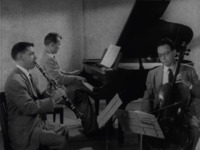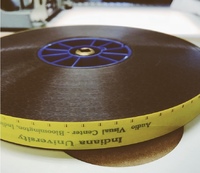Browse Exhibits (2 total)
Musical forms

6 episodes, 1956, University of Southern California Department of Cinema
From WNET:
"Henri Temianka, leader and first violinist of the Paganini Quartet, serves as narrator on this series of six half-hour programs designed to explain the forms used by composers in simple terms for the layman. A program is devoted to each of the following forms: sonata, scherzo, rondo, theme and variation, fugue, and song-form. Members of the Quartet and distinguished guests from the University of Southern California Music School faculty presents illustrative selections to supplement Temianka’s narration. Temianka, well-known musician and music educator, wrote and directed the series for production by the University of Southern California Department of Cinema."
Music as a language

13 episodes, 1957, University of Rochester
From WNET:
"'Music as a Language' shows how a composer communicates to his audience through his music. Demonstrating innumerable aspects of composition, orchestration and instrumentation, Dr. Howard Hanson explains how he and other composers use consonant and dissonant rhythms and harmonies. Most of the material used in the series is a result of nearly thirty years of research and performance in the field of music by Dr. Hanson. Many of the illustrative devices used him originated in his own composition classes. One large chart, for example, a product of nearly ten years work, maps the music of the last three hundred years in an astronomy of sound. On the basis of its tonal sonorities and their inter-relationships, Dr. Hanson shows how music, from the time of Palestrina to the present, can be roughly categorized into different periods in our history. He shows, too, how so-called “modern” music was used by Handel and Beethoven, and the relationship that exists among boogie, primitive music and some of the works of Beethoven, Stravinsky and his own compositions. The essence of the series is the authority given to what is said and done by the composer himself. For the first time, an audience will have the opportunity of seeing an artist critically analyze his own works. These include his Fifth Symphony; his opera, “Merry Mount” and other compositions. The series was produced for the Center by the University of Rochester, under the direction of Don W. Lyon, Director of Television for Rochester, who serves as the program’s announcer."

